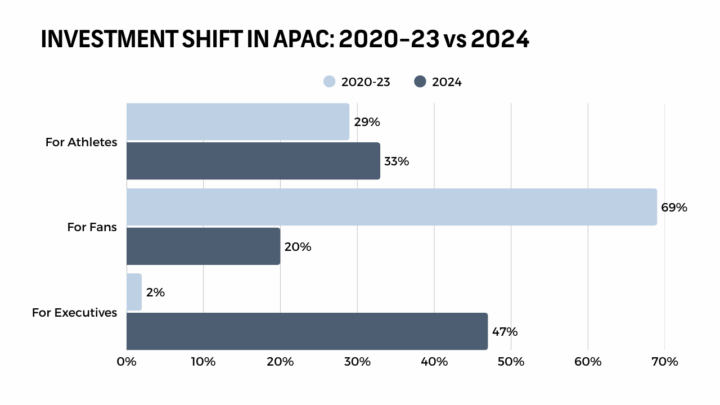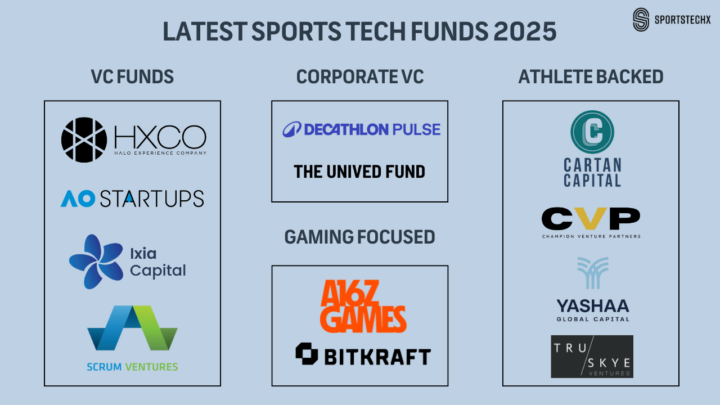A new wave of leagues, some athlete-founded, others tech-fueled, is changing the meaning of what a sport looks like, how long it should last, and who gets to control the narrative.
Whether it’s seven-a-side football with Twitch polls, 3-on-3 basketball with equity models, or track and field reimagined as league matchups, these new formats are capturing all fans, funders, and broadcasters.
Here’s a breakdown of 10 new sports leagues and why they matter right now:
🎾 1. Intennse – Tennis meets team sport
- Launched: 2024
- What’s New: 10-minute timed “Bolts”, one serve per point, team-based format with coaching timeouts and fan cheering encouraged mid-point.
- Backed by: Early-stage private investors, building local franchises in the U.S.
- Why It Matters: Tennis has lacked innovation for years. Intennse compresses gameplay into a Gen Z-friendly format with a music-festival feel and no traditional etiquette rules. The league is designed for fast streaming, social media, and future broadcast partners.
🏃 2. Grand Slam Track – Track and field goes league-style
- Launched: 2025
- Founded by: Michael Johnson
- Format: 4 major events per year (“Slams”), featuring head-to-head races and points-based league standings.
- Funding: Raised $30M seed round (led by athletics-focused investors and private equity).
- Why It Matters: Unlike the one-off nature of Diamond League meets, this model builds season-long storylines and recurring rivalries. Peacock has picked up early broadcast rights and the athlete-first revenue share model is a big draw.
⛳ 3. Tomorrow’s Golf League (TGL) – Golf in prime-time, indoors
- Launched: 2025
- Backed by: Tiger Woods, Rory McIlroy, Serena Williams, Alexis Ohanian, and major team ownership groups
- Format: 6 city-based teams, playing 15-hole matches in a simulator-equipped arena (SoFi Center, Florida).
- Funding: Nearly $500M in Series A valuation
- Viewership: 502,000 average TV viewers per match across 15 broadcasts (early 2025)
- Why It Matters: Golf is slow and long , TGL solves both issues with two-hour, high-production, made-for-TV matches on Monday nights. Built for storytelling, fan interaction, and second-screen engagement.
⚽ 4. Kings League + Kings World Cup – Football meets Fortnite rules
- Launched: 2022 (Spain), global expansion in 2025
- Founded by: Gerard Piqué and Ibai Llanos
- Format: 7-a-side football with fan-voted rules, wildcard cards, and mic’d-up referees
- Viewership: 1.5 billion social impressions, 100M+ global viewers, 40K in-stadium attendance at the World Cup final in Turin
- Why It Matters: It’s football turned entertainment engine — think Twitch, TikTok, and chaos. Sponsors like Adidas and Cupra are on board, and its digital-native approach is influencing even UEFA’s youth engagement strategy.
⚽ 5. Queens League – Women’s football, reimagined
- Launched: 2023
- Format: Mirrors Kings League with 7-a-side matches, viral rules, and a heavy Twitch presence
- Viewership: 56.1K avg viewers, 4.6M hours watched on Twitch
- Why It Matters: It’s not just the women’s version — it’s showing that alternative formats can be vehicles for serious women’s sport viewership and creator collaboration. More than 50% of team owners are female influencers and athletes.
⚽ 6. Baller League – Indoor football gets a rebrand
- Launched: 2023 (UK)
- Format: 6-a-side indoor football with creator-led teams, livestream-first presentation
- Funding: $35M+
- Viewership: Over 62K across Season 3
- Why It Matters: Think of it as the Kings League for the UK market – fast gameplay, short halves, and media-trained creators as captains. Early signs suggest it’s ripe for youth crossover and brand integration.
🏒 7. 3ICE – Offseason hockey, turned up to 11
- Launched: 2022
- Format: 3-on-3, full-rink ice hockey with no stoppages and only 6 minutes per half
- Funding: $14.9M raised
- Viewership: Canada vs USA face-off final drew 16.2M+ viewers across ESPN/Sportsnet
- Why It Matters: Built for highlight reels and betting overlays. It’s an NHL-style product condensed into one-hour tournaments, held in multiple cities. Think of it as the “T20 of hockey.”
🏀 8. BIG3 – 3-on-3, but with legends and flair
- Launched: 2017
- Founded by: Ice Cube
- Format: 3v3 basketball with 4-point circles, ex-NBA and global stars, city-based teams from 2025
- Funding: Over $80M raised
- Viewership: 515K avg TV audience (CBS), 14K in-person fans per weekend
- Why It Matters: It’s more than a nostalgia league – BIG3 has built its own fandom and monetization model, including NFT team ownership. With home markets now launching, it’s scaling up.
🏀 9. Unrivaled – Player-owned women’s basketball
- Launched: 2025
- Founded by: Breanna Stewart, Napheesa Collier
- Format: 6 teams, 6-player rosters, 3-on-3 full-court games in a custom-built arena in Miami
- Funding: $43.7M raised from investors including Giannis Antetokounmpo, Michael Phelps, and Coco Gauff
- Viewership: 377K from initial streams
- Why It Matters: Players earn ~$222K each + equity stakes. It’s a statement league — WNBA stars creating their own product, production value, and revenue share. First of its kind.
🏏 10. The Hundred – Shorter cricket with equal billing
- Launched: 2021
- Backed by: ECB
- Format: 100 balls per side, city-based franchises, men’s and women’s games on the same day
- Funding: £520M+ in franchise value, $650M total investment
- Viewership & Attendance: 540K broadcast viewers (2024); 4.1M total in-person attendees
- Why It Matters: It’s doing what T20 couldn’t – gender parity, family-focused attendance, and massive commercial potential. Already inspired women’s cricket spinoffs across South Asia.
The Bigger Picture
- They shorten games for modern attention spans
- They favor streaming over traditional TV
- They empower athletes as founders, not just players
- And they treat sport as content-first, competition-second
In summary, the rise of new sports leagues like Intennse, Grand Slam Track, TGL, Kings/Queens League, 3ICE, Big3, Unrivaled, The Hundred, and others is more than a fad, it’s a strategic response to shifting consumer behaviors. Younger audiences demand faster action, greater interactivity, and authenticity (they love seeing legends play for the love of the game or fellow athletes launching leagues). Media companies, in turn, crave live content that can still draw real-time viewership in the streaming era. These innovative formats provide exactly that: live sports “snackable” enough for social media, yet compelling enough for stadium crowds.
Not every new league will survive (many will face growing pains in monetization and player recruitment), but collectively they are pushing the sports industry toward a more open, creative, and fan-centric future. Established leagues are already borrowing ideas – whether it’s the NBA adding a midseason tournament or tennis exploring mixed-gender team events – validating the impact of this trend.
For sports business professionals, these upstart leagues offer a glimpse into tomorrow’s playbook, where the only true out-of-bounds is sticking too rigidly to the past.





